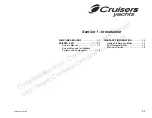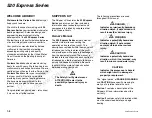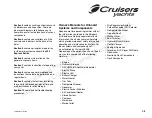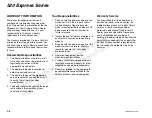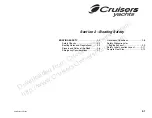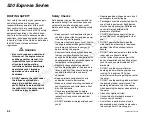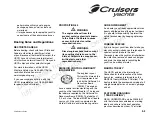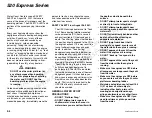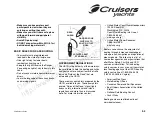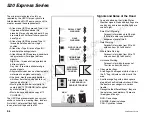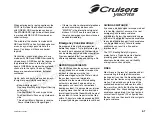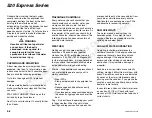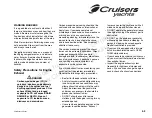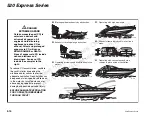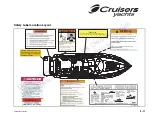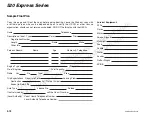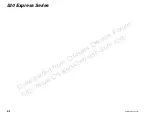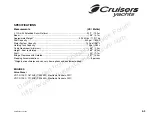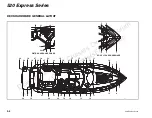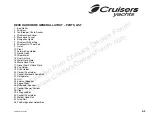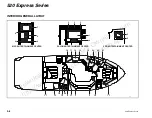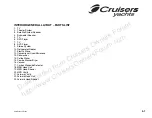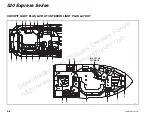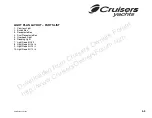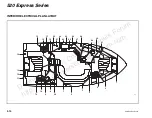
520 Express Series
2-7
When entering port or going upstream, the
PORT (left) side of the channel is marked
with GREEN, ODD numbered can buoys.
The STARBOARD (right) side of the channel
is marked with RED, EVEN numbered or
spherical buoys.
The middle of the channel is marked with
RED and WHITE vertically striped spherical
or can buoys; always pass close to the
buoys. Can buoys will have a spherical
topmark.
Obstructions, channel junctions, etc. are
marked with RED and GREEN horizontally
striped buoys. A RED band at the top means
the preferred channel is to the left of the
buoy; a GREEN band means the preferred
channel is to the right of the buoy. These
buoys are sometimes lettered, but never
numbered.
Lights, bells and horns are used on buoys
for night or poor visibility conditions.
• Know whistle signals!
One Long Blast: Warning Signal (Coming
out of slip)
One Short Blast: Pass on my port side
Two Short Blasts: Pass on my starboard
side
Three Short Blasts: Engines in reverse
Four or More Blasts: Danger Signal
• If there is a ship-to-shore radio telephone
aboard, answer any distress calls.
“MAYDAY” is the international signal of
distress. DO NOT use this word unless
there is an emergency and assistance is
needed immediately.
Emergency Considerations
Be prepared to deal with emergencies
before they happen. Try to formulate a plan
for each type in advance so that decisions
can be made quickly and without hesitation.
Precious moments lost can mean the
difference between losing and saving a life.
REPORTING ACCIDENTS
The USCG requires the owner or operator of
a boat involved in an accident to report the
incident to the proper marine law
enforcement agency for the State in which
the accident occurred. Immediate
notification to the nearest State boating
authority is required if a person dies or
disappears as a result of a recreational
boating accident. If a person dies or injuries
requiring more than first aid are involved, a
formal report must be filed within 48 hours of
the accident. A formal report must be filed
within 10 days for accidents exceeding $500
in property damage or complete loss of boat.
GIVING ASSISTANCE
If you see a distress signal or suspect a boat
is in trouble, you must assume it is a real
emergency and render assistance
immediately. By law, the operator in charge
of the craft is obligated to provide assistance
to any individual in danger if such assistance
can be provided safely. Failure to render
assistance can result in a fine and/or
imprisonment.
The 1971 Boating Safety Act grants
protection to a “Good Samaritan” boater
providing good faith assistance, and
absolves a boater from any civil liability
arising from such assistance.
FIRES
Most fires are the result of gasoline and oil
accumulating in the bilge from careless
fueling practices. Use the fire extinguisher at
the base of the flames using a sweeping
motion. Prudent and accurate use of the
available chemicals should contain all but
the worst fires. Verify that the fire has been
extinguished. If so, check damage and get
assistance immediately. If not, get out and
swim at least 25 yards (23 m) upwind from
the boat and use the visual distress signals
to get assistance.
Downloaded
from
Cruisers
Owners
Forum
http://www.CruisersOwnersForum.com



